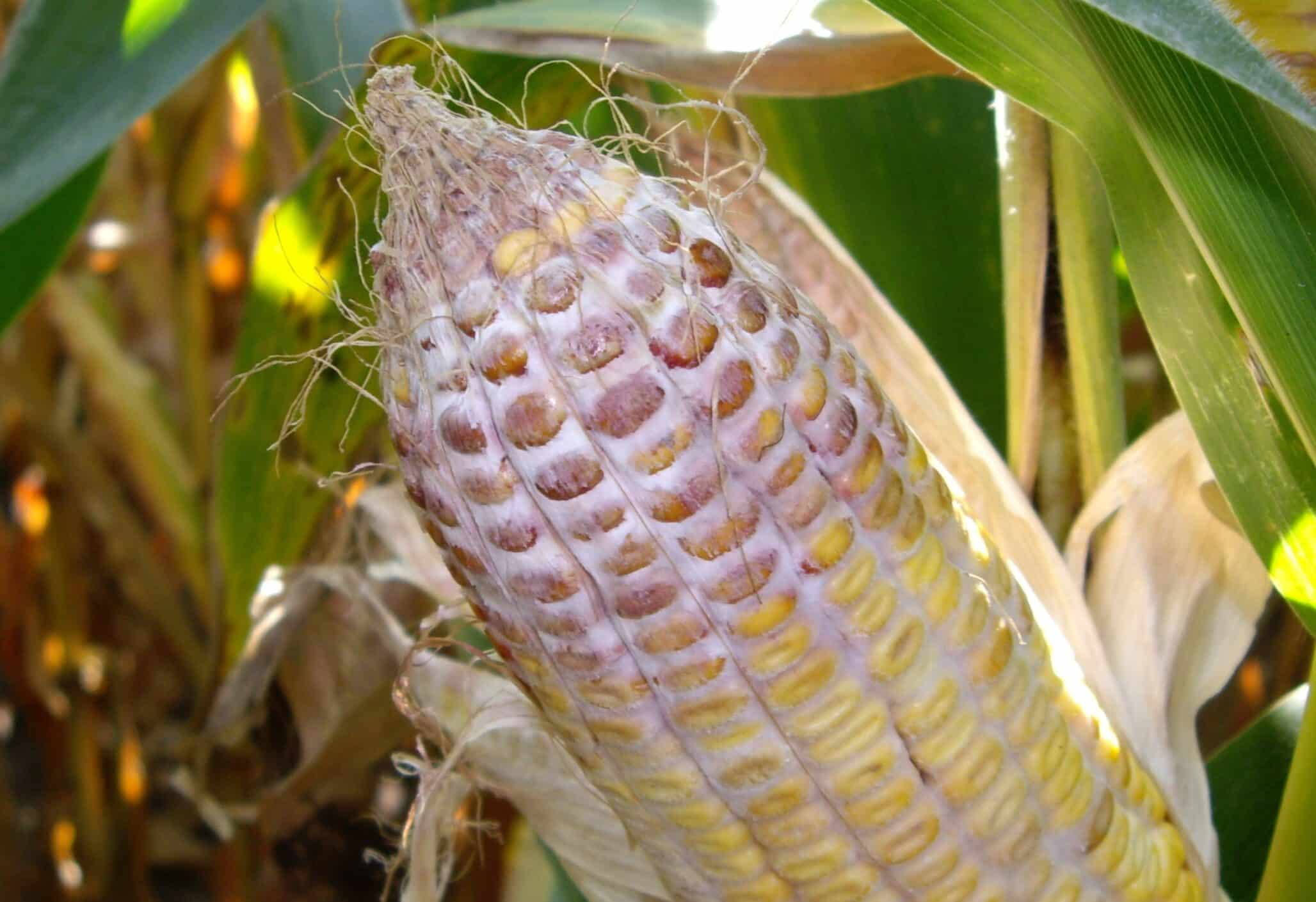Universities in three states, plus one in Brazil, are researching ways to stop Fusarium graminearum.
The University of Kentucky, in collaboration with Kansas State University, Virginia Tech, and the Federal University of Viçosa in Brazil, has received a $686,010 grant to research the fungus Fusarium graminearum. This multi-institutional and international project, titled “Selective Forces Impacting Fusarium graminearum Species Causing Gibberella Ear Rot in Maize,” focuses on developing new tools and resources to monitor, model and manage Fusarium strains responsible for significant corn diseases.
“Our research is particularly focused on the maize side of Fusarium graminearum‘s lifecycle,” University of Kentucky plant pathology professor Lisa Vaillancourt said in a UK Martin-Gatton College of Agriculture, Food and Environment news release. “Understanding how this pathogen adapts and thrives on corn is crucial for developing strategies to manage its spread and reduce its impact on both maize and wheat crops.”
The study focuses on F. graminearum, the fungus that causes Gibberella ear rot (GER) in maize and Fusarium head blight (FHB) in wheat. These diseases not only result in severe yield losses but also contaminate grains with harmful mycotoxins like deoxynivalenol, which can pose significant health risks to humans and animals, leading to regulatory challenges.
Vaillancourt emphasized the importance of international cooperation, stating, “The inclusion of our Brazilian partner is particularly crucial because Brazil’s year-round corn cultivation offers a unique opportunity to study the pathogen evolving over multiple generations under diverse environmental conditions and cropping practices. This partnership enhances the overall understanding of the pathogen through broader genetic analysis and more effective experimentation.”
Research Goals
- Genome Sequencing and Comparative Analysis: The team will sequence and analyze the genomes of diverse F. graminearum isolates from maize and wheat. This genomic data will help identify genetic loci that adapt based on the host plant, offering insights into the pathogen’s evolution.
- Population Dynamics and Host Selection: Researchers will examine population shifts in F. graminearum by inoculating maize and wheat under continuous and rotational cropping systems in different regions. These experiments aim to reveal how agricultural practices influence the pathogen’s genetic evolution.
- Controlled Crosses and Genetic Characterization: By conducting controlled crosses between maize and wheat isolates, the study will characterize genetic regions linked to high aggressiveness and toxigenicity, helping to determine if the same genetic factors affect the pathogen’s virulence across both crops.
With GER becoming more prevalent in North America, particularly in the northern Corn Belt, the research places a strong emphasis on understanding F. graminearum‘s lifecycle in maize. Corn acts as a major reservoir for the fungus, facilitating its spread to wheat and other cereals. The research aims to identify critical factors driving the pathogen’s lifecycle in maize, key to developing effective management strategies.
Benefits for Farmers and the Economy
Understanding how F. graminearum adapts to different environments is crucial for improving disease management practices.
“This research will provide new insights into the pathogen’s genetic diversity and adaptive strategies, leading to better disease forecasting and control methods,” Vaillancourt noted. “These findings will improve disease management models, allowing for better prediction and mitigation of Fusarium head blight and Gibberella ear rot, which will ultimately benefit farmers and reduce economic losses.”
The project’s ultimate goal is to identify genetic markers that detect high-risk Fusarium strains. This will lead to the development of advanced surveillance tools for growers, enabling more effective management of disease outbreaks. Improved pathogen monitoring will contribute to sustainable agricultural practices and reduce the impact of these diseases on global food security.
Currently, the team is collecting isolates for genome sequencing and preparing for detailed analysis. The four-year project will advance through genomic comparisons, field experiments, and controlled crosses to meet its objectives.
“Our goal is to equip farmers with the knowledge and tools they need to manage Fusarium graminearum effectively,” Vaillancourt said. “By understanding the genetic and environmental factors driving this pathogen’s evolution, we can develop more precise and sustainable disease management practices, ensuring both crop yields and food safety for future generations.”
Researchers Kiersten Wise, Mark Farman, and Carl Bradley from the Department of Plant Pathology are also contributing to the study.
This research is supported by the National Institute of Food and Agriculture, U.S. Department of Agriculture, under award number 2024-67014-42427. The opinions, findings, conclusions, or recommendations expressed in this publication are those of the authors and do not necessarily reflect the views of the U.S. Department of Agriculture.













